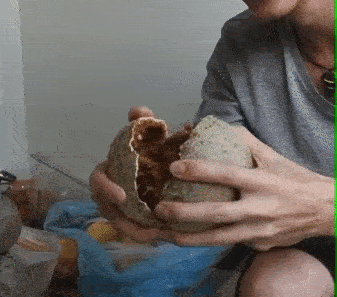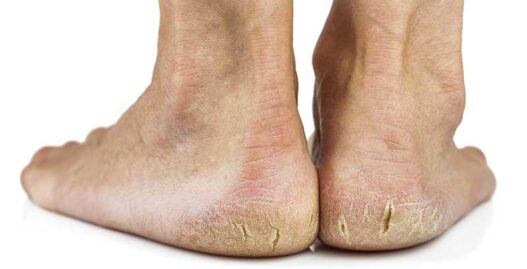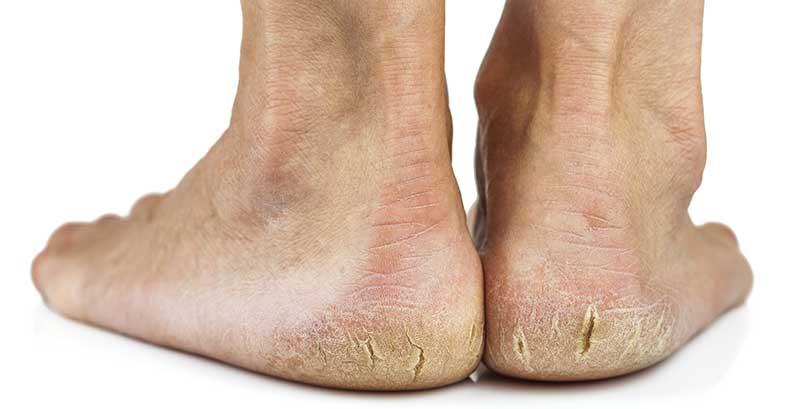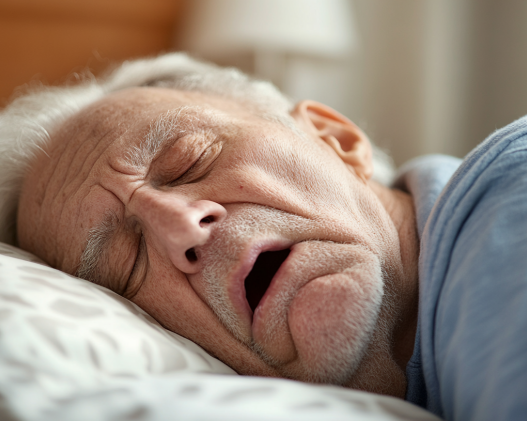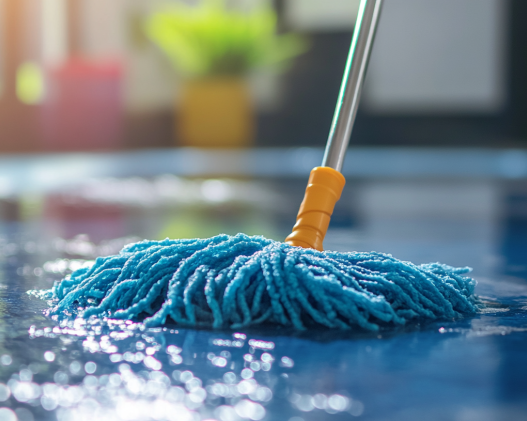As the autumn and winter months arrive, many people notice dry, cracked skin on their heels. This condition not only affects the look of your feet but can be incredibly painful, especially if left untreated. Cracked heels can lead to infections, and walking may become agonizing if the cracks worsen.
But what causes cracked heels? How can we prevent or relieve this issue? Let’s take a deeper dive into the causes, symptoms, and solutions for cracked heels.
Causes of Cracked Heels: It’s Not Just Dry Skin
Cracked heels refer to dry, rough patches of skin that develop cracks or fissures, particularly on the heel area. These cracks can range from mild to severe and may also be accompanied by excessive thickening of the skin, resembling calluses. When the cracks reach deeper layers of skin, they can cause significant pain.
Normally, the skin on our feet is soft, well-moisturized, and elastic. This helps the skin endure the friction, pressure, and shear forces during walking or standing. However, when the skin loses moisture, it becomes rough, dry, and prone to cracking.
Here are some common causes of cracked heels:
- Dry Skin: Lack of moisture or natural oils causes skin to crack.
- Cold, Dry Weather: Cold temperatures and low humidity in autumn and winter exacerbate dryness.
- Standing or Walking for Long Periods: Prolonged standing or walking increases pressure on the heels, worsening the condition.
- Wearing Open-Back Shoes: Shoes like sandals that don’t support the heel properly can lead to cracked heels.
- Being Overweight: Excess weight puts added pressure on the heels, contributing to cracks.
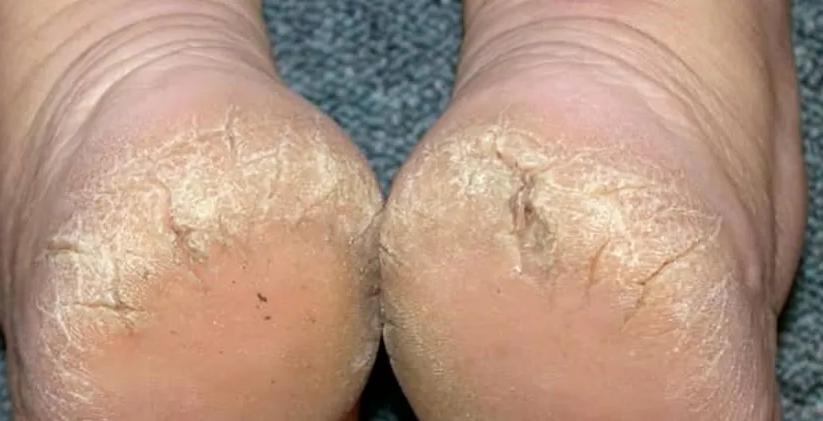
Aside from these common causes, certain health conditions may also lead to cracked heels. For example, diabetes and hypothyroidism can result in dry, cracked skin on the heels. Studies show that up to 31% of people with diabetes experience heel cracks.
Additionally, fungal infections like athlete’s foot can sometimes cause cracked heels, along with other symptoms like itching, redness, blisters, and peeling skin. If you suspect a fungal infection, antifungal treatment is necessary.
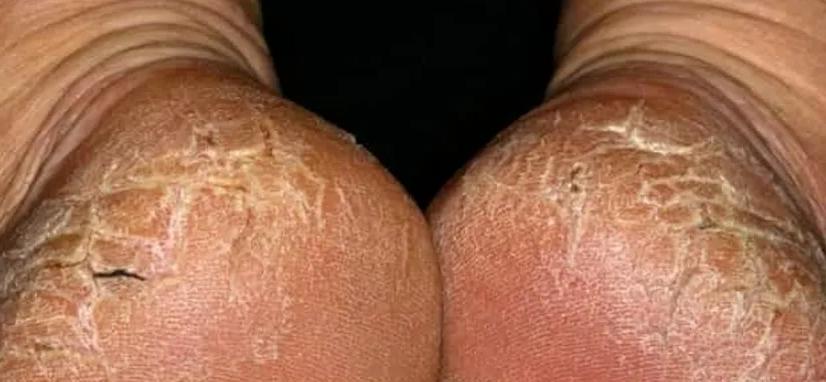
Symptoms: How Cracked Heels Appear
Cracked heels can vary in severity. Initially, the skin around the heels may become dry, rough, and thickened. It may change color, turning yellow or brown, resembling a callus. If left untreated, the cracks may deepen, causing pain, especially when walking or standing.
In severe cases, the cracks may bleed, form scabs, and even become infected. For individuals with uncontrolled diabetes, these cracks can develop into diabetic foot ulcers, which are slow to heal.
4 Ways to Relieve Cracked Heels at Home
Here are four effective ways to treat cracked heels:
- Soak Your Feet: Soak your feet in warm water for about 10-20 minutes daily to soften the thickened skin.

- Remove Dead Skin: Use a pumice stone or foot scrub to gently exfoliate the thickened skin from your heels.
- Use Effective Products: Apply products containing ingredients like urea, alpha-hydroxy acids, salicylic acid, or lactic acid to help hydrate and soften the skin.
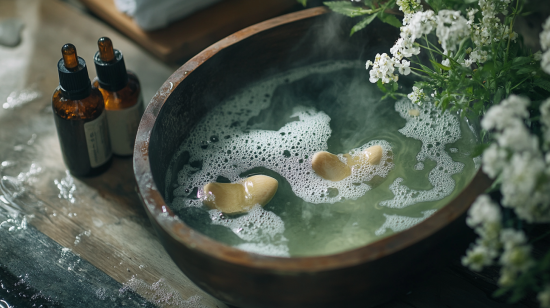
- Moisturize Aftercare: Before bed, apply a thick layer of petroleum jelly or a rich moisturizer to seal in moisture and promote healing.
Prevention: How to Keep Your Heels Healthy
As with many conditions, prevention is better than treatment. Here are some tips to keep your heels in top shape, especially during the colder months:
- Moisturize Regularly: Use thick creams or ointments to maintain skin hydration, especially in cold, dry weather.
- Wear the Right Shoes: Avoid open-back shoes. Opt for well-fitting, supportive footwear.
- Use Proper Insoles: Choose insoles that redistribute pressure on your heels and avoid harsh, unsupportive insoles.
- Limit Long Stints of Standing or Walking: Whenever possible, avoid standing or walking for prolonged periods to reduce pressure on your heels.
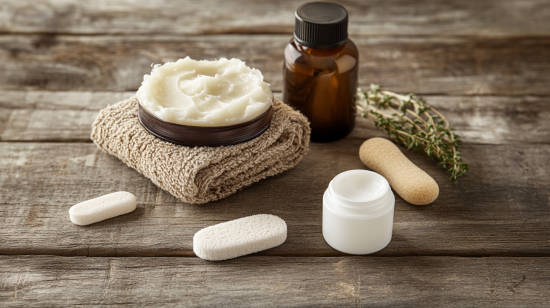
Conclusion: Keep Your Heels Smooth & Pain-Free
By following these simple tips, you can prevent cracked heels and keep your feet healthy throughout the year. Moisturize regularly, protect your feet with supportive shoes, and be proactive about treatment if cracks begin to appear. With the right care, you’ll enjoy smooth, pain-free heels, step by step!






